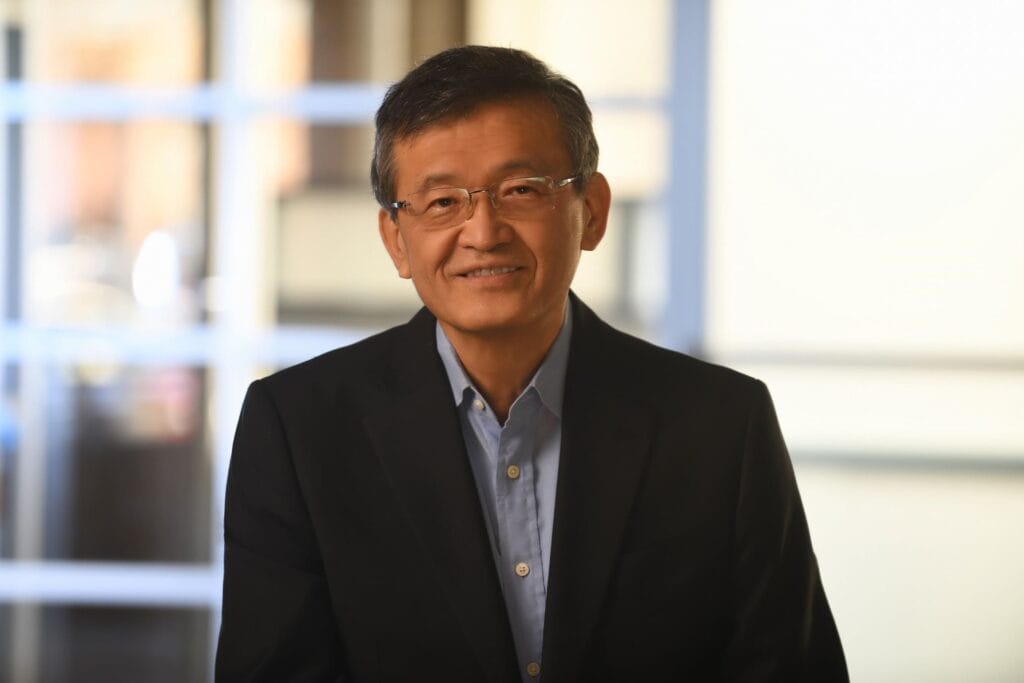The arrival of Lip-Bu Tan as the new CEO of Intel has generated an immediate impact both inside and outside the company. While investors have greeted the news with optimism, driving the stock value up by 15%, employees have reacted with uncertainty and concern. Tan, the first external CEO in the 57-year history of Intel, hinted in his first speech that difficult decisions lie ahead, albeit without providing clear details about his long-term strategy.
A Leadership Change with Mixed Expectations
Lip-Bu Tan is a veteran of the semiconductor industry, with a distinguished track record leading Cadence Design Systems, a key player in the chip design sector. His appointment as CEO of Intel marks a break from the company’s tradition of historically promoting executives from within.
Before taking on his new role, Tan was a member of Intel’s board of directors, a position he left in August 2024, seemingly due to his frustration with internal inefficiencies and the slow pace of structural changes in the company. According to Reuters, his dissatisfaction centered on the bureaucracy of the organization and a management approach to staffing cuts that he felt had not gone far enough to improve the company’s agility and competitiveness.
Potential Cuts and Restructuring
During his first meeting with employees, Tan hinted that Intel may take drastic measures to make the company more efficient and competitive. While he avoided mentioning specific plans, many in the industry speculate that his strategy may include more aggressive workforce reductions, particularly targeting middle management, which has been identified as an obstacle to innovation within Intel.
The semiconductor sector has become a highly competitive battleground, and Intel has lost ground to rivals like Nvidia and TSMC, who have established themselves as leaders in chip manufacturing and artificial intelligence technology development. As Intel continues to face challenges in its Intel Foundry Services (IFS) division, the competition is advancing with a more agile and efficient strategy.
Questions About Manufacturing Strategy
One key issue that Tan did not address in his speech is whether Intel will continue to pursue an integrated design and manufacturing strategy, or if, as many analysts have suggested, it should split the company and separate its foundry business from its processor design division.
Intel has attempted to compete in the manufacturing market with companies like TSMC and Samsung, but results have been mixed so far. The cancellation of the $5.4 billion acquisition of Tower Semiconductor due to regulatory issues in China has hurt the company’s strategy to strengthen its foundry business.
Tan, with his background at Cadence, has a deep understanding of the needs of fabless chip designers, which could be advantageous for Intel if it decides to focus on enhancing its manufacturing service offerings.
The Challenge of Artificial Intelligence
Another critical area where Intel has lagged is in artificial intelligence (AI). While Nvidia has managed to capitalize on the AI boom, becoming a trillion-dollar company thanks to its leadership in graphics processing units (GPUs), Intel has struggled to compete in this market.
Despite several acquisitions and attempts to strengthen its presence in AI, the company has not achieved the same level of success as its competitors. The pressure on Tan will be intense to define a clear strategy that allows Intel to regain ground in this key sector for the future of computing.
Wall Street Welcomes the Change in Leadership
Despite the internal uncertainty, Tan’s appointment has been well received in the financial markets. The stock price of Intel rose by 15%, reflecting investor confidence that the new CEO can implement the necessary measures to revitalize the company.
Analysts like Stacy Rasgon from Bernstein have noted that Tan’s experience in the sector positions him well to make sound strategic decisions. However, the real challenge will be executing those changes without further destabilizing the organization.
An Uncertain Future for Intel?
Intel finds itself at a critical juncture in its history. The company has been a pillar of the technology industry for decades, but increasing competition and internal challenges have threatened its leadership position.
Lip-Bu Tan has the task of restructuring the company, improving its operational efficiency, strengthening its manufacturing business, and regaining its competitiveness in AI. It will not be an easy path, and the decisions he makes over the coming months will define Intel’s future in an industry that is advancing at a breakneck pace.
Conclusion
Tan’s arrival at Intel marks the beginning of a new phase filled with challenges and opportunities. While Wall Street applauds his appointment, employees anxiously await the possible restructuring measures that could directly affect their jobs.
Will Tan be able to transform Intel into a more agile and competitive company? Only time will tell, but one thing is certain: the semiconductor industry continues to evolve rapidly, and Intel needs to move swiftly if it wants to regain its leadership.
via: Tom’s Hardware

